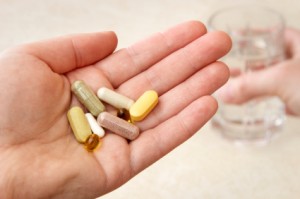Are there any links between maternal drug use and autism?

Thalidomide
Thalidomide was originally used as a treatment for morning sickness during pregnancy but was pulled from the market after it was shown to cause birth defects. A study of 100 Swedish thalidomide embryopathy cases found a strong association between gestational use of thalidomide and the development of typical autism1. Although the mechanism of action of thalidomide in autism is unknown, it is shown to bind to Cereblon, a protein that governs the assembly and neuronal surface expression of large conductance calcium-activated potassium channels. Inherited mutations in this protein have shown to lead to learning and memory deficits, suggesting a potential mode of action. Early embryonic exposure of thalidomide in rodents has caused behavioral abnormalities that mimic the hallmarks of autism. [AutDB]
Misoprostol
Misoprostolis a commonly prescribed treatment of gastric ulcers and less frequently used to induce medical abortions. A study of 23 Brazilian children with Mobius sequence identified 7 children with autism/autistic traits2. Of these, 4 cases had a positive history of misoprostol use during pregnancy. The mechanism of action is currently unknown. Due to its abortive effects, there are no known animal models of misoprostol exposure during gestation3.
Valproic Acid
Valproic acid is a commonly prescribed anti-epileptic drug (AED) and mood stabilizing drug. Valproic Acid is also a teratogen and has been shown to cause birth defects. The association between autism and prenatal valproic acid exposure was first reported by single child case studies published in 1994 and 19974. Subsequent studies have validated the association3, 5; however the mechanism of action is yet to be established. The valproic acid animal model of autism displays early onset behavioral aberrations that mimicthe key characteristics of autism. [AutDB]
Selective Serotonin Reuptake Inhibitors
Selective Serotonin Reuptake Inhibitors (SSRIs) are a class of drugs commonly used as antidepressants. The first association hypothesized that the hyperseratonemia, a neurochemical alteration observed in 30% of autistic patients may be due, in part to use of SSRI’s prenatally6. A recent population-based case-control study reported the most profound effect with SSRI use during the first trimester 7. Rodent models display symptoms characteristic of those observed in ASD.6
Cocaine
A 1992 clinical report of 70 referred children with a history of prenatal cocaine exposure born at an inner city hospital reported substantial language delays in 94% of referred children and autism in 11.4%, much higher than the national average at the time8. An additional clinical study also reported substantial language delays, a key diagnostic characteristic of autism/ASD, in children exposed to cocaine in utero. However this study did not examine the frequency of autism/ASD among study subjects. Finally, a case study of three 25-36 month olds with prenatal exposure to cocaine (as well as alcohol and other illicit drugs) reported a "notable pattern of autistic-like behaviors”9. Additional research needs to be performed to better establish the association and understand the mechanism of action.
Ethanol
Fetal Alcohol Syndrome is a pattern of physical and mental defects in children exposed to high levels of alcohol during pregnancy. Comorbidity between Fetal Alcohol Syndrome (FAS) and autism was first reported in a case study of 6 children ranging in age from 6-15 years10. A subsequent case study of reported 3 cases of FAS and autism comorbidity in children aged 25-36 months. Alternatively, larger studies report no association between prenatal alcohol consumption and autism. However, a recent cohort study of 71 children adopted from Eastern Europe reported FAS in 52% of the children and autism in 9%, suggesting a moderate association between prenatal alcohol consumption and autism 11. Further analysis to understand the associations in addition to better rodent models to understand the mechanism are required.
| References: |
|

